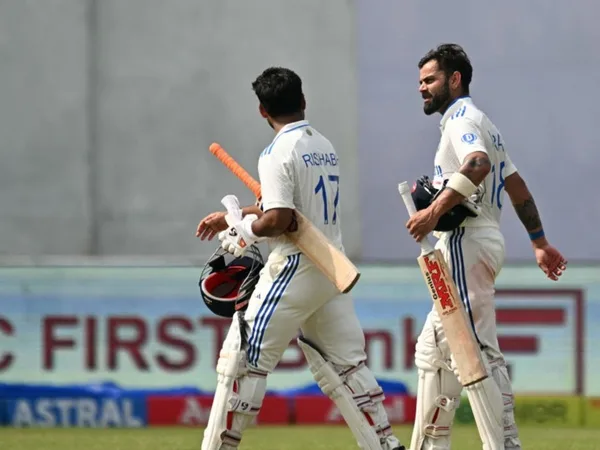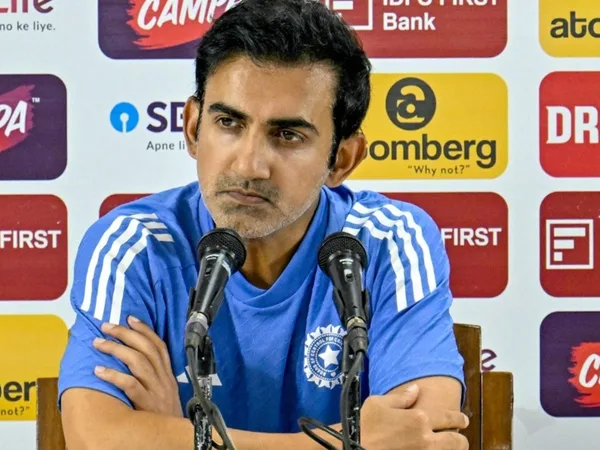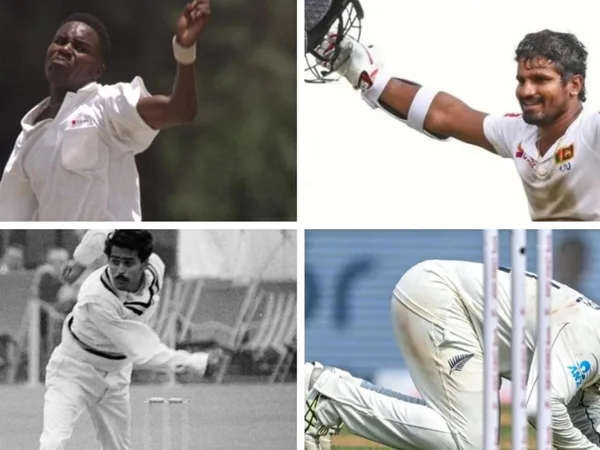
New Zealand seized the initiative on day two of the second Test against India in Pune, taking a 103-run first innings lead. How did they do it?
At the end of day one of this Test match, India head coach Gautam Gambhir must have thought this job was a bit of a walk in the park. India had made three changes to their lineup, and the most controversial of them all had paid off in spectacular fashion.
Washington Sundar pulled off his best Ashwin impression in the first innings, taking 7-59 to help bowl the visitors out for 259. On a turning track, it wasn't exactly a low score, but given the Black Caps were 197-3 at one point, India would no doubt have taken it.
In fact, perhaps the only thing that went wrong for India all day was the wicket of Rohit Sharma, right at the end of the day as they began batting.
Also read: Washington Sundar, R Ashwin share all ten wickets to set off-spin world record
On day two, they started at 16-1, with Yashasvi Jaiswal and Shubman Gill in the middle. But by lunch, they were in tatters. In the space of 12 and a half overs, they lost Shubman Gill, Virat Kohli, Jaiswal, Rishabh Pant, Sarfaraz Khan and Ravichandran Ashwin to slip to 107-7 at the end of the first session.
Ravindra Jadeja pulled out a few big hits in the second session, but it was only a matter of time until India were bowled out, which they were for 156 shortly after lunch as Mitchell Santner one-upped Sundar's effort by taking 7-53.
India's batting made 260 look like a mammoth score on the Pune wicket, but what really happened, and how did the match unfold this way?
Pune wicket makes slow spin the way to go
On a relatively dry surface, both teams seemed aware that the pitch was likely to assist spin from quite early on in the match. After New Zealand chose to bat on day one, India captain Rohit Sharma was willing to introduce Ashwin as early as the eighth over.
It must be said at this point that all turning tracks are not created equal. A particular wicket under particular conditions can behave differently for different bowlers, who have varied trajectories, speeds, lines and lengths.
On this particular pitch, what emerged over time was that the slower the spinners were through the air, far greater was their "purchase" off the wicket. More simply, when they bowled slower, the ball gripped and turned more and when they bowled quicker they were far less likely to turn it big. This pattern continued through the second innings of the match as well, as seen below.
Now, this is a phenomenon that is hard to predict – no one can definitively say that a pitch will behave in this manner. In the first innings, India's spinners needed their time bowling in the middle to eventually figure this out, by observing how the ball reacted off the surface.
It was during this process of experimentation that New Zealand ended up scoring the bulk of their runs, getting to 197-3 in the first 59 overs. Ashwin had taken the first three wickets, but Sundar took all of the next seven, in the latter two sessions of the day as he gradually decreased the speed he was bowling at.
Bowling slower helped the spinners turn the ball more prodigiously, but the wickets were not necessarily a direct result of this. Rather, it also made the slightly quicker ball a surprise, with batters perhaps playing for turn and being beaten.
When New Zealand came out to bowl, they had two advantages. One, they knew how the pitch had behaved and that slower deliveries were likely to turn more. Two, they had bowlers who naturally operated at lower speeds than India's – Ajaz Patel, Mitchell Santner and Glenn Phillips.
As seen above, all three of them bowled at under 90 kmph through the innings, with the wrecker-in-chief, Santner, slowing it up more and more as the game progressed – just like Sundar did in the first innings. Both of these spinners also varied their pace well, ensuring that the slightly quicker delivery also came into play as a wicket-taking option. The following table shows the speeds of each wicket-taking delivery by a spinner in the first two innings:
| Bowler | Batter | Speed (kph) |
| Ravichandran Ashwin | Tom Latham | 89.5 |
| Ravichandran Ashwin | Will Young | 86.7 |
| Ravichandran Ashwin | Devon Conway | 90.3 |
| Washington Sundar | Rachin Ravindra | 92.8 |
| Washington Sundar | Tom Blundell | 86.5 |
| Washington Sundar | Daryl Mitchell | 84.6 |
| Washington Sundar | Glenn Phillips | 90.8 |
| Washington Sundar | Tim Southee | 93.1 |
| Washington Sundar | Ajaz Patel | 94.1 |
| Washington Sundar | Mitchell Santner | 91.4 |
| Mitchell Santner | Shubman Gill | 87.0 |
| Mitchell Santner | Virat Kohli | 82.3 |
| Glenn Phillips | Yashasvi Jaiswal | 91.6 |
| Glenn Phillips | Rishabh Pant | 89.9 |
| Mitchell Santner | Sarfaraz Khan | 78.0 |
| Mitchell Santner | Ravichandran Ashwin | 89.0 |
| Mitchell Santner | Ravindra Jadeja | 89.9 |
| Mitchell Santner | Akash Deep | 75.8 |
| Mitchell Santner | Jasprit Bumrah | 76.8 |
Attack the best defence for India – but only when done right
As far as the second innings goes, while New Zealand may have bowled well, India's batters did not cover themselves in glory. Early on, Gill and Jaiswal were beaten on multiple occasions while trying to defend, unable to tell which deliveries might turn and which would go straight on.
The batters after them all took the route of aggression, with survival by defense appearing doubtful. This approach did in Virat Kohli and Rishabh Pant in particular, as the former missed a full toss early on and the latter was done in by a short-ish delivery which kept low.
Read more: 'Worst shot of his life' – Virat Kohli faces flak after full toss dismissal
Their approach was largely borne out of the right thought process: looking to score was probably the optimum way to survive on such a wicket. But the execution left much to be desired, with several across-the-line and hurried shots against some genuinely slow bowling.
This match, and by extension this series, and by extension India's invincibility at home in the last decade or so are all at stake, and set up by this pair of innings. On a fundamental level, India's spinners were simply out-bowled at home. It's a seemingly ridiculous notion, considering one of those spinners took 7-59.
But New Zealand were both better equipped for, and handled, the conditions better. There's also a real poetry in how they slowed things down to speed up the game.
Data source credit: BCCI
Follow Wisden for all cricket updates, including live scores, match stats, quizzes and more. Stay up to date with the latest cricket news, player updates, team standings, match highlights, video analysis and live match odds.








